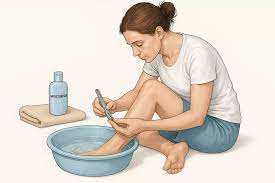A hernia happens when an organ or internal tissue pushes through a weak spot in the muscle or connective tissue meant to hold it in place. This can result in a bulge or lump, which may or may not be painful. Many misconceptions surround hernias, their causes, and their treatments. Here are some typical myths to provide clear, straightforward information:
Myth: Only Men Get Hernias
While it is true that older men are more likely to develop certain types of this condition, particularly inguinal hernias in the groin, they affect people of all genders and ages. Women are susceptible to developing this condition, especially umbilical hernias near the belly button. They may also get femoral hernias in the upper thigh. Pregnancy and childbirth are factors that increase a woman’s risk of developing this condition due to the added pressure on the abdominal wall.
Myth: Hernias Heal Automatically
A hernia will not go away on its own. It is a physical defect, a hole or weakness in the muscle wall, and it cannot heal by itself. While rest or lying down might make a bulge seem to disappear temporarily, the underlying weakness remains.
Without medical intervention, a hernia is likely to grow larger and more uncomfortable over time. Ignoring a hernia also carries the risk of it becoming strangulated, a serious condition where the blood supply to the trapped tissue is cut off. This situation requires immediate medical attention.
Myth: Surgery is a Risky Procedure
Modern hernia repair surgery is a generally safe operation. Most repairs are performed using minimally invasive techniques, such as laparoscopy. These methods involve small incisions. They typically lead to less pain, minimal scarring, and a quicker recovery for the patient.
All surgical procedures come with some level of risk, including infection or reaction to anesthesia. Your surgical team takes many precautions to minimize these risks. For many people, the risks associated with leaving a hernia untreated, like strangulation, are greater than the risks of the surgical repair itself.
Your doctor may discuss the specific procedure and any potential risks with you. They will also provide detailed instructions on how to prepare for the procedure and what to expect during the recovery period. By following these guidelines and maintaining an open line of communication with your healthcare team, you can help find the ideal outcome.
Myth: Only Lifting Causes Hernias
Lifting heavy objects incorrectly is a well-known risk factor for hernias. Lifting is far from the only cause of this condition. This condition develops from a combination of muscle weakness and strain. The weakness in the abdominal wall may be present from birth or develop over time. Several factors contribute to increased pressure on the abdominal wall and may lead to a hernia:
- Chronic coughing from smoking or lung conditions
- Straining during bowel movements due to constipation
- Obesity, which may add continuous pressure to the abdominal muscles
- Pregnancy
Get Treated for a Hernia
Misinformation about this condition can confuse and prevent people from seeking the necessary care. Hernias are a medical condition that requires a proper diagnosis and treatment plan from a healthcare professional. They do not resolve on their own and can worsen without appropriate medical care. If you suspect you have this condition or are experiencing symptoms like a bulge or pain, speaking with a doctor is the most effective course of action. Contact a surgeon today to schedule a consultation and learn more about your treatment options.














